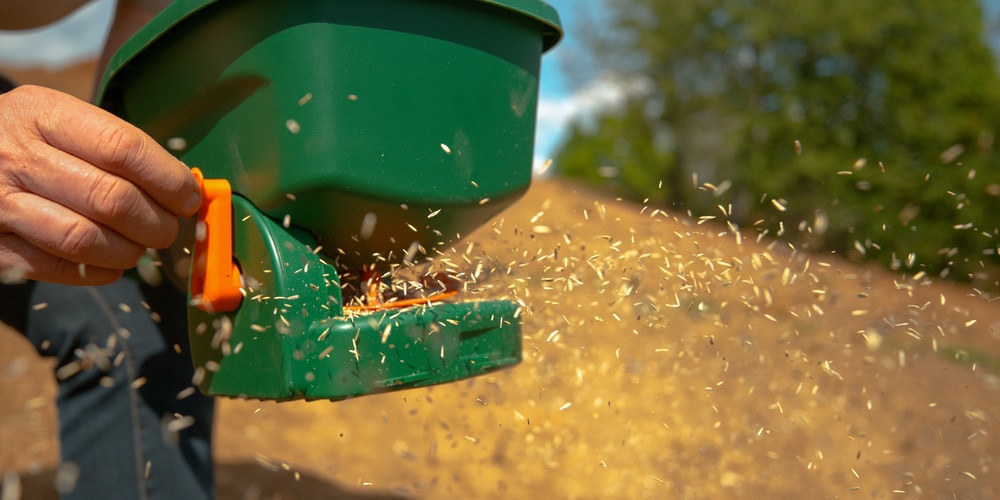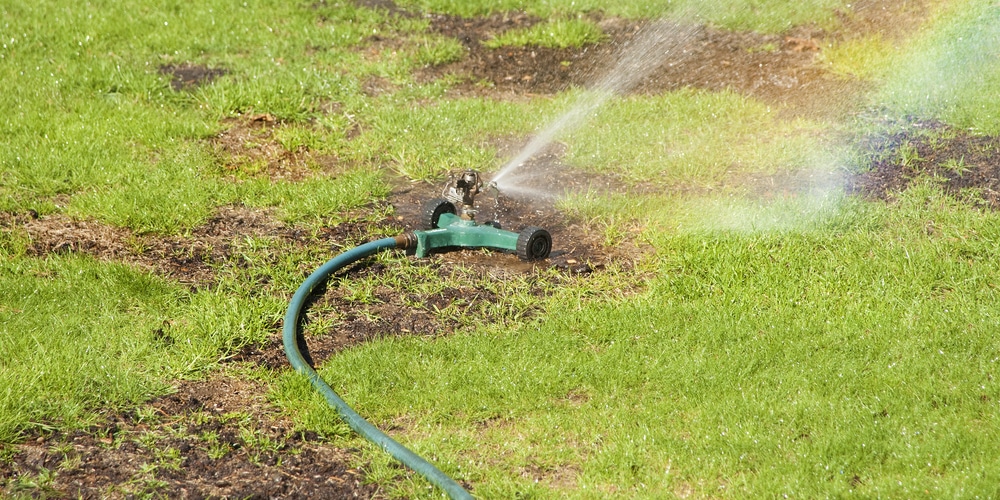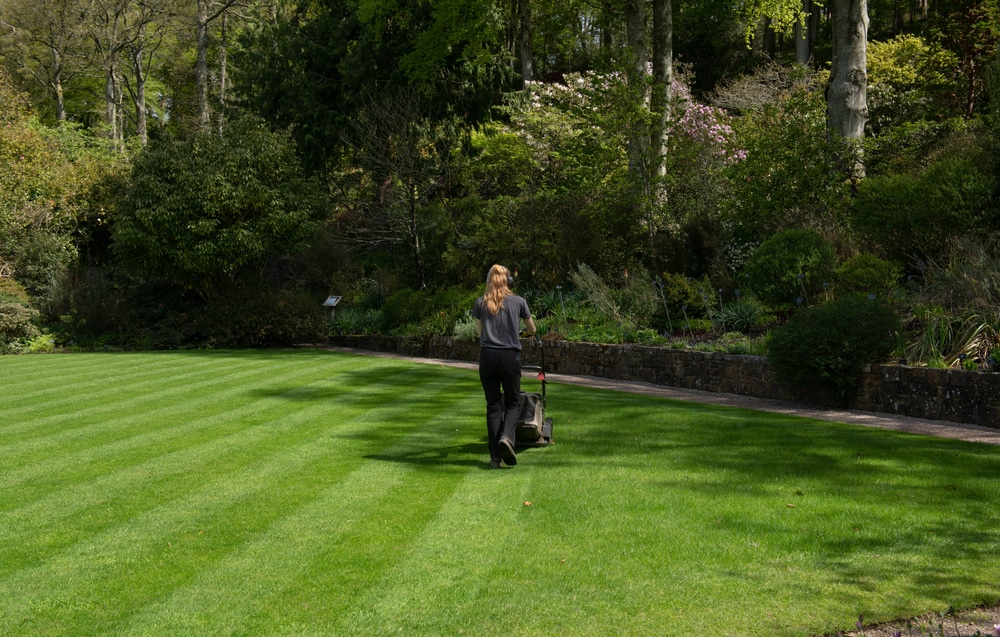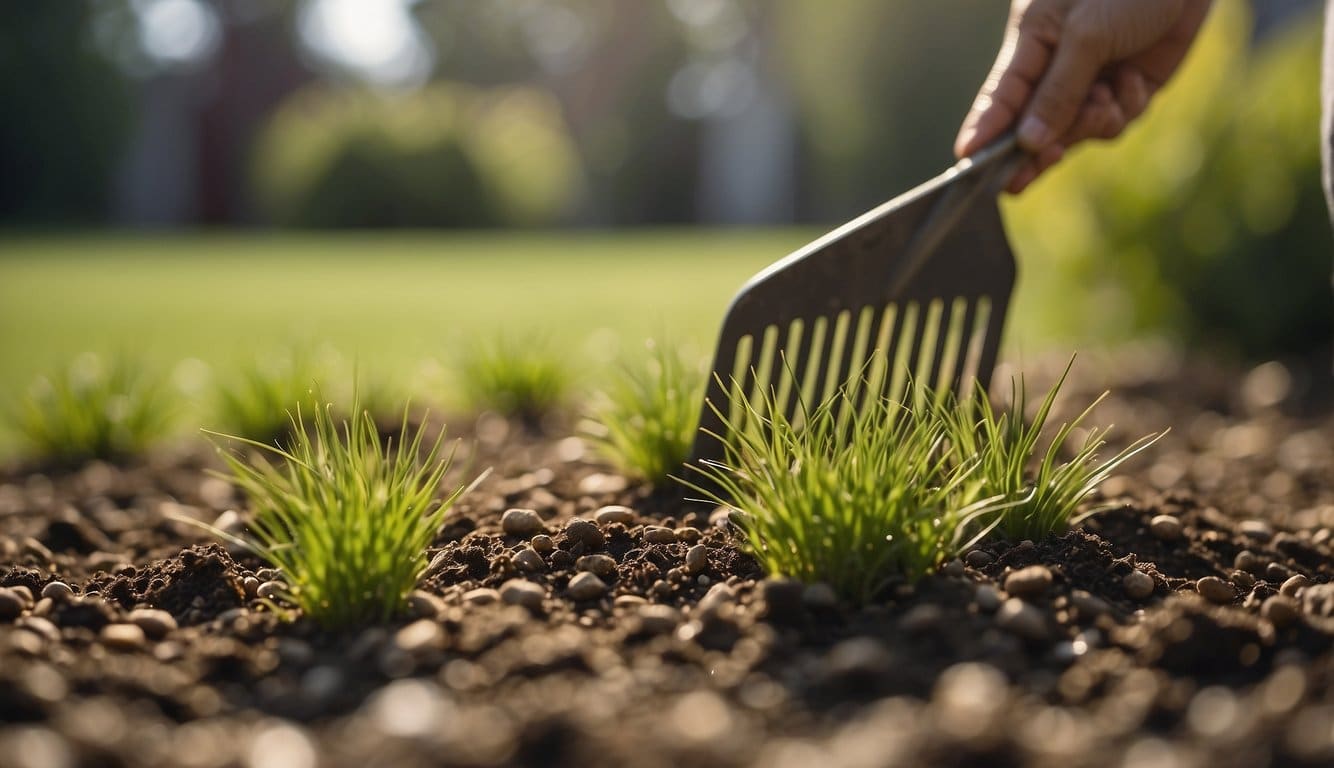Condensed Version
Here’s a short version of this article. If you want more details on each step, use the table of contents to navigate to the section you need. Thanks for stopping by!
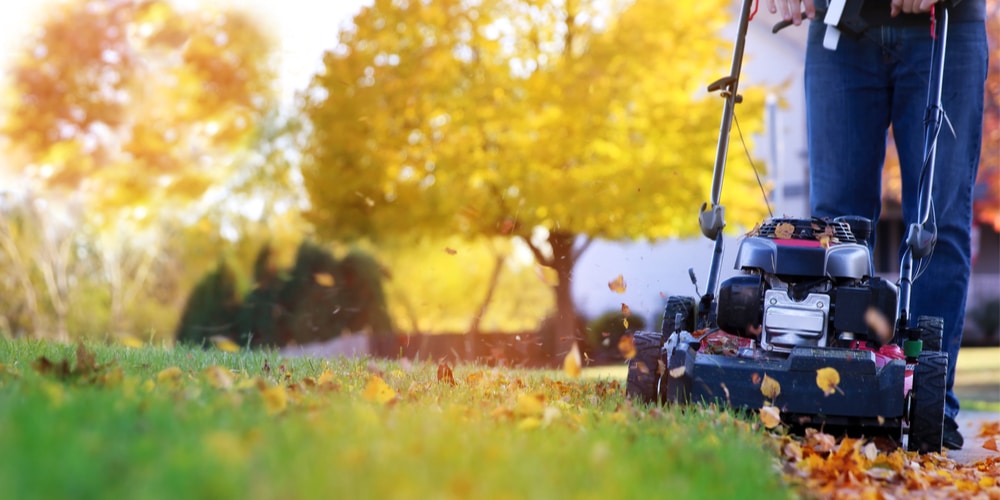
- Choose the Right Time: The best time for overseeding depends on your climate. In cooler climates, early fall is ideal. For warmer climates, late spring to early summer is preferable.
- Select the Right Seed: Choose a grass seed that matches your current lawn type and is suitable for your climate.
- Prepare the Lawn:
- Mow your lawn to a lower height than usual, about 1.5 to 2 inches, to allow sunlight to reach the soil.
- Rake the lawn to remove thatch and debris, and to loosen the top layer of soil. This helps the new seed make contact with the soil.
- Improve Soil Conditions: If necessary, apply a thin layer of topsoil or compost to enrich the soil and improve seed-to-soil contact.
- Spread the Seed: Use a spreader to evenly distribute the grass seed over the target areas. Follow the recommended seeding rate on the seed package.
- Lightly Rake: Gently rake the area to help seeds make contact with the soil without burying them too deeply.
- Water Regularly: Keep the seeded areas moist but not waterlogged. Water lightly and frequently, at least once or twice daily, until the seeds germinate and the new grass is established.
- Fertilize: About four to six weeks after the grass germinates, apply a starter fertilizer to encourage strong root growth.
- Post-Care: Avoid heavy foot traffic on the newly seeded areas until the grass is well established.
Planning and Preparation
Before sowing new grass seed into an existing lawn, careful planning and preparation are essential.
The success of overseeding relies largely on assessing the current lawn’s condition, selecting the most suitable grass seed, and choosing the optimal time for planting.
Assessing Your Lawn
The first step is to take a thorough look at the current state of the lawn. One should check for signs of thinning grass, compacted soil, or areas with poor drainage.
It is imperative to identify shaded areas as well since these spots may require a different type of grass seed tolerant of lower light levels.
The degree of thatch—dead grass and roots on the soil surface—should also be evaluated.
A small amount of thatch can be beneficial, but too much may require dethatching to ensure new seeds make contact with the soil.
Choosing the Right Grass Seed
Choosing the appropriate type of grass seed is critical and should match the existing lawn for a consistent look.
Grass types vary with climate, soil type, and sun exposure.
The following table outlines common grass types suited for various conditions:
| Climate Zone | Sun Exposure | Grass Types |
|---|---|---|
| Cool | Full sun | Kentucky Bluegrass |
| Cool | Shade | Fine Fescue |
| Warm | Full sun | Bermuda |
| Warm | Shade | St. Augustine |
One should also consider grass seeds labeled as “endophyte-enhanced,” which can provide natural resistance to pests while being safe for the environment.
Timing for Planting
Timing is everything when it comes to planting grass seed.
Generally, the best time to oversee is in the fall for cool-season grasses and in the late spring or early summer for warm-season grasses.
These periods offer moderate temperatures and ample rainfall, which help seeds germinate and establish roots.
It is vital to avoid extreme weather conditions such as frost or days of high heat, which can hinder growth.
One should also check the local weather forecast to ensure a window of steady, favorable weather following planting for optimum seed germination.
Soil Preparation
Effective soil preparation is essential for the successful germination of grass seed on an existing lawn.
Homeowners should focus on assessing soil conditions, clearing debris from the lawn, and enhancing soil quality to create an optimal environment for new grass seeds.
Testing Soil Conditions
A homeowner should test the soil’s pH to ensure it falls between 6.0 and 7.0, which is the ideal range for grass growth.
This can be done with a soil test kit available at garden centers. Testing may also reveal nutrient deficiencies, which will need to be addressed before seeding.
| Soil Property | Ideal Range | Action if Outside Range |
|---|---|---|
| pH | 6.0 – 7.0 | Apply lime to increase pH, or sulfur to decrease pH. |
| Nutrient Levels | Varied | Add fertilizers based on specific deficiencies (nitrogen, phosphorus, potassium). |
Clearing the Lawn
Before seeding, the lawn must be cleared of thatch, dead grass, and debris.
Thatch is a layer of organic material that can block seeds from reaching the soil. A rake or specialized dethatching equipment can be used to remove it.
Any large objects or waste should also be cleared to create a clean slate for seeding.
Improving Soil Quality
Enhancing soil quality can involve adding a thin layer of topsoil or compost, which can provide a rich medium for seed growth and improve nutrient content.
Aeration is also vital for soil health; it allows air, water, and nutrients to penetrate, encouraging deep root growth.
A garden fork or mechanical aerator can be used to create small holes throughout the lawn to facilitate this process.
| Soil Improvement Technique | Tool/Equipment | Purpose |
|---|---|---|
| Topdressing | Topsoil, Compost | Adds nutrients and improves soil structure. |
| Aeration | Garden fork, Mechanical aerator | Allows better penetration of water, air, and nutrients. |
Seeding the Lawn
To achieve a vibrant lawn, proper seeding technique is paramount. It ensures even distribution and optimal seed-to-soil contact, which are crucial for germination.
Methods of Seeding
Manual Seeding: The homeowner can spread the seed by hand or with the help of handheld or push spreaders, which are suitable for small to medium-sized areas.
This method offers control over the distribution but can be uneven if not done carefully.
Mechanical Seeding: For large lawns, mechanical seeders or slit-seeders can be rented. These machines deposit the seed directly into the soil, ensuring contact and improving germination rates.
Applying Grass Seed Evenly
To apply grass seed evenly:
- Calculate the seeding rate: Refer to the seed package for the recommended rate.
- Divide the seed: Split your seed into two equal parts.
- Two-pass technique:
- Apply the first half while walking in a north-south direction.
- Apply the second half while walking east-west.
This crosshatching method minimizes bare spots and overlaps in coverage.
Seed-to-Soil Contact
Good seed-to-soil contact is critical for the seed’s moisture absorption and germination. Achieving this involves:
- Raking: Before seeding, lightly rake the area to loosen the top layer of soil, creating a welcoming bed for the seeds.
- Rolling: After seeding, use a roller to press seeds into the soil, improving contact without burying them too deeply.
Consistent watering and avoiding traffic on the seeded areas will further bolster seedling development and establishment.
Post-Planting Care
After grass seed is sown, success hinges on proper care and maintenance to ensure robust growth and a thriving lawn. The essential steps include consistent watering, timely fertilization, and correct mowing practices.
Watering Newly Seeded Areas
Watering should commence immediately after seeding, focusing on keeping the top inch of soil consistently moist without causing waterlogging.
A fine spray is preferred to prevent the seeds from washing away.
Until germination occurs and seedlings are well-established, they recommend watering lightly but frequently, possibly twice a day depending on weather conditions.
It’s crucial to avoid letting the seeds dry out, as this can cause them to die.
| Stage | Frequency | Amount |
|---|---|---|
| Germination | Twice daily | Light spray |
| Seedling growth | Decrease frequency | Increase amount |
Fertilization Schedule
A proper fertilization schedule enhances root development and boosts the growth of the new grass.
Beginning with a starter fertilizer high in phosphorus is vital upon seeding. This should be worked into the top 4 to 6 inches of soil.
After the initial growth, they generally recommend applying a balanced fertilizer every six to eight weeks during the growing season, depending on the specific needs of the grass type and local soil conditions.
Mowing After Seeding
The first mowing should take place once the new grass reaches a height of about 3 inches, typically several weeks after the seeds have sprouted.
Any mowing done too soon can uproot tender seedlings.
Mowing at this height encourages the grass to thicken and limits stress on the young plants.
It’s important to use a sharp mower blade and to not remove more than one-third of the grass height in a single mow to prevent damage to the new growth.
Maintaining Lawn Health
Maintaining a healthy lawn requires attention to detail and the right practices to ensure grass thrives year-round. A vigilant approach to weed control, thatch management, and seasonal lawn care plays a crucial role in nurturing a lush, resilient lawn.
Weed Control
Weeds not only mar the aesthetic appeal of a lawn but also compete with grass for water, light, and nutrients.
Timely intervention is crucial.
They recommend using pre-emergent herbicides to prevent weed seeds from germinating in the spring. For established weeds, targeted post-emergent products work best.
Always follow the herbicide’s label for specific application rates and timing.
Thatch Management
A thin layer of thatch supports healthy turf, but too much can prevent water and nutrients from reaching soil.
Lawns should be dethatched when thatch buildup exceeds 1/2 inch. Mechanical dethatchers are effective, removing excess thatch without harming the grass.
Regular aeration also helps by breaking down thatch and improving soil structure.
Seasonal Lawn Care
The lawn’s needs change with the seasons. In spring and fall, core aeration is beneficial, promoting root growth and improving nutrient uptake.
During summer, lawns require more frequent watering, especially during dry spells, to sustain grass health.
In fall, overseeding can repair thin areas, fostering a thick, vibrant turf for the following year. Fertilization should coincide with the grass’s natural growth cycles for optimal results.
Frequently Asked Questions
When enhancing an established lawn through overseeding, correct methods and timing are crucial for the best results.
What is the proper method to overseed an established lawn?
Overseeding should begin with lawn preparation, including dethatching and aeration, to ensure seed-to-soil contact.
The overseeded area should be watered lightly but regularly to maintain moist soil conditions until germination.
Can I apply grass seed directly on top of my existing lawn without any soil preparation?
Grass seed will have a better chance of germinating with proper soil preparation. This includes dethatching to remove dead grass and aerating to loosen the soil, allowing seeds to nestle in and access water and nutrients effectively.
What are the best practices for overseeding a lawn in the spring season?
One should wait until the risk of frost has passed before overseeding in the spring.
Select a high-quality grass seed that matches the existing lawn and local climate conditions.
After sowing, provide consistent moisture and avoid heavy foot traffic until the new grass establishes.
How should grass seed be applied to bare patches in a lawn?
For bare patches, remove dead grass, loosen the soil, and apply a starter fertilizer before seeding.
One should spread seeds evenly over the area, gently rake them in, and keep the soil moist until seeds germinate and new growth appears.
Is it recommended to mix grass seed with topsoil when overseeding?
Mixing grass seed with a thin layer of topsoil can enhance seed-to-soil contact and protect seeds from birds.
However, one should not apply more than 1/4 inch of topsoil to avoid suffocating the existing grass.
How frequently should a lawn be overseeded to maintain optimal health?
The frequency of overseeding depends on the lawn’s condition and growth rate.
Typically, overseeding annually or biannually helps to maintain a dense, healthy turf that can resist wear and pests.
Last update on 2025-06-06 / Affiliate links / Images from Amazon Product Advertising API



